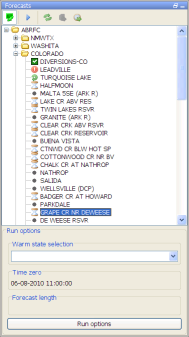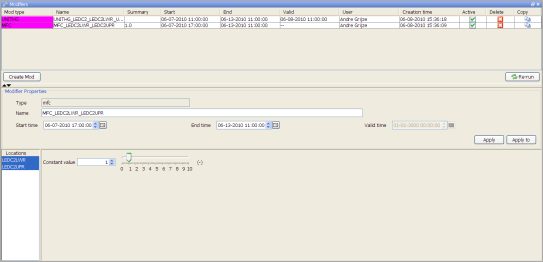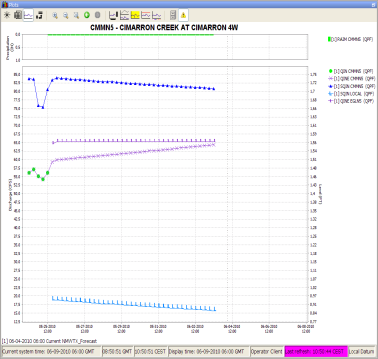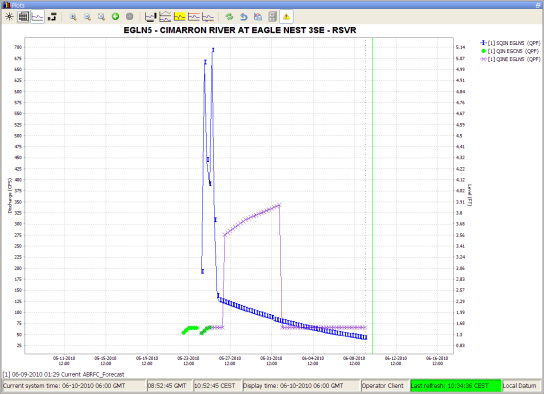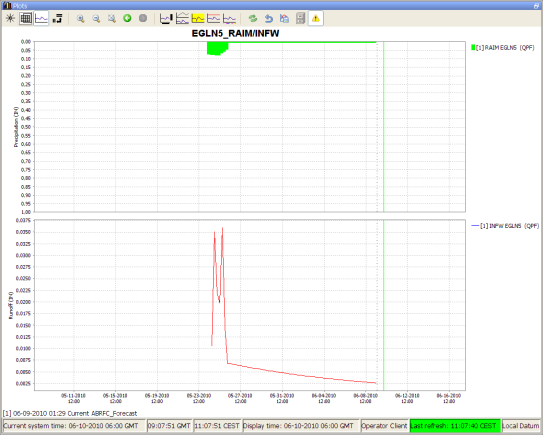...
© Deltares, 2010 |
...
...
National Weather Service
...
...
...
...
...
...
...
...
...
...
Title
...
...
Implementation of CHPS
...
...
...
...
...
...
...
...
...
...
Abstract
...
...
...
...
...
...
...
...
...
...
...
...
...
...
...
...
...
...
...
...
...
...
...
References
...
...
...
...
...
...
...
...
...
...
...
Ver
...
Author
...
...
...
Date
...
Remarks
...
Review
...
...
...
Approved by
...
...
...
...
...
...
...
...
...
...
...
...
...
...
...
...
...
...
...
...
...
...
...
...
...
...
...
...
...
...
...
...
...
...
...
...
...
...
...
...
...
...
...
...
...
...
...
...
...
...
...
...
...
...
...
...
...
...
...
...
...
...
...
...
...
...
...
...
...
Project number
...
...
...
1002049
...
...
...
...
...
...
...
...
...
Keywords
...
...
...
FEWS, CHPS, Flood Forecasting, Interactive forecast display
...
...
...
...
...
...
...
...
...
Number of pages
...
...
...
-
...
...
...
...
...
...
...
...
...
Classification
...
...
...
None
...
...
...
...
...
...
...
...
...
Status
...
...
...
Draft
...
...
...
...
...
...
...
...
...
...
...
...
...
...
...
...
...
...
...
...
| Wiki Markup |
|---|
\\
<ac:structured-macro ac:name="anchor" ac:schema-version="1" ac:macro-id="56a1e14b-470c-4699-a800-0df578684515"><ac:parameter ac:name="">wlL5</ac:parameter></ac:structured-macro><span style="color: #ff0000"><em>wlL5</em></span><ac:structured-macro ac:name="anchor" ac:schema-version="1" ac:macro-id="23c7c338-1ce1-450b-ab09-3e9ac1067ceb"><ac:parameter ac:name="">wlSummary</ac:parameter></ac:structured-macro> <span style="color: #ff0000"><em>wlSummary</em></span>
<ac:structured-macro ac:name="anchor" ac:schema-version="1" ac:macro-id="f332a761-9efd-413a-8e63-37c16b07614e"><ac:parameter ac:name="">wlContents</ac:parameter></ac:structured-macro>{*}Contents*
<ac:structured-macro ac:name="anchor" ac:schema-version="1" ac:macro-id="2efcb6a2-558b-4330-8267-cdccdb076a82"><ac:parameter ac:name="">wlL2</ac:parameter></ac:structured-macro><span style="color: #ff0000"><em>wlL2</em></span><ac:structured-macro ac:name="anchor" ac:schema-version="1" ac:macro-id="ffe6fdc4-31d2-4103-af4b-df0e9ae0e22b"><ac:parameter ac:name="">wlL1</ac:parameter></ac:structured-macro> <span style="color: #ff0000"><em>wlL1</em></span><ac:structured-macro ac:name="anchor" ac:schema-version="1" ac:macro-id="7d325a7f-3bb5-4820-a443-8ef67c98fc88"><ac:parameter ac:name="">wlL3</ac:parameter></ac:structured-macro> <span style="color: #ff0000"><em>wlL3</em></span><ac:structured-macro ac:name="anchor" ac:schema-version="1" ac:macro-id="954b2a59-0112-46ca-8a72-ceb1f0695fea"><ac:parameter ac:name="">wlL4</ac:parameter></ac:structured-macro> <span style="color: #ff0000"><em>wlL4</em></span>
*1* *Introduction*
*2* *What is the IFD?*
*Components of the IFD*
*3*
3.1 Which displays are used in the IFD?
3.2 Forecast panel
3.3 Modifiers panel
3.4 Topology panel
3.5 Plot
3.6 Plot overview
3.7 Forecaster help
3.8 Run info
3.9 Forecaster notes
*4* *Modifiers*
4.1 Introduction
4.2 Time series modifiers
4.2.1 Single value modifiers
4.2.2 Constant value modifiers
4.2.3 Enumaration modifiers
4.2.4 Time series modifier
4.2.5 Mark _unreliable_ modifier
4.2.6 Compound modifier
4.2.7 Missing value modifier
4.2.8 Switch option modifier \[Suggest new name - Combined Time Series Modifier\]
4.3 Module parameter modifiers
4.3.1 Blending steps modifier
4.3.2 Sample years modifier
4.3.3 Module parameter modifier
4.3.4 Change ordinates modifier
4.3.5 Reverse order modifiers
*5* *How to create a forecast with the IFD*
5.1 Steps in creating a forecast
5.2 Starting FEWS
5.3 Selecting the forecast panel
5.4 Review the list of available state date/times
5.5 Adjust state and/or forecast length
5.6 Starting the forecast process
5.7 Reviewing run status workflow
5.8 Review graphs (graph display listens to segment selection)
5.9 Creating a mod in the time series display
5.10 Creating a mod in the mods display
5.11 Continue with the forecast process downstream
5.12 Ending the forecast process
*6* *Dockable windows*
6.1 Docking and undocking main displays
6.2 Save display layout and reload on opening with same user
6.3 Save display layout and reload default layout
*7* *Configuration*
7.1 Introduction
7.2 Explorer.xml
7.2.1 Displays
7.2.2 System time
7.3 Topology.xml
7.4 DisplayGroups.xml
7.4.1 Configure plots for node
7.4.2 Dual Y-axis
7.4.3 Discharge - stage displays
7.4.4 Inverted graphs
7.5 ModifierTypes.xml
<ac:structured-macro ac:name="anchor" ac:schema-version="1" ac:macro-id="3a376152-86b2-4bb8-8034-b9a0f9d92102"><ac:parameter ac:name="">wlListTabs</ac:parameter></ac:structured-macro><span style="color: #ff0000"><em>wlListTabs</em></span><ac:structured-macro ac:name="anchor" ac:schema-version="1" ac:macro-id="cd35d16b-2976-465d-8d2f-c4196c88a0d2"><ac:parameter ac:name="">wlListFigs</ac:parameter></ac:structured-macro> <span style="color: #ff0000"><em>wlListFigs</em></span><ac:structured-macro ac:name="anchor" ac:schema-version="1" ac:macro-id="498537dd-db77-4360-86ec-e1c1c8965d44"><ac:parameter ac:name="">wlListPhotos</ac:parameter></ac:structured-macro> <span style="color: #ff0000"><em>wlListPhotos</em></span><ac:structured-macro ac:name="anchor" ac:schema-version="1" ac:macro-id="cc55da8d-b16e-4f7c-a762-70ca936435c6"><ac:parameter ac:name="">wlListSymb</ac:parameter></ac:structured-macro> <span style="color: #ff0000"><em>wlListSymb</em></span>
\\
\\
\\ |
...
What is the IFD?
The IFD is short for Interactive Forecast Displays.
The IFD is a set of displays which enable the forecaster to create a forecast manually in comparison to a batch run which creates a forecast in a background process triggered either by a schedule or manually.
When a forecaster creates a forecast in the IFD, the forecast created in the background process is usually used as the starting point for the forecaster.
The forecaster validates the results from the server run and adjusts the forecast by using modifiers were needed.
When the forecaster is satisfied with the adjusted forecast the forecast is finalized and published to other forecasters.
Usually when creating a forecast by using the IFD, FEWS runs in a mode where all the windows are dockable.
This is an important aspect of the IFD because this feature enables the forecaster to keep an overview of the system.
...
...
Which displays are used in the IFD?
The IFD consists of several panels.
Each of these panels has a specific role in the process of creating a forecast with the IFD.
In this chapter the functionality of each panel in the IFD will be explained.
In the next chapter will be explained with a use case how a forecast can be created with the
IFD by using the combined functionality of the separate panels.
...
Forecast panel
The forecast panel plays a central role in creating a forecast in the IFD.
The forecast panel shows a tree with all the forecast points for a region and the grouping of these forecast points.
Each node in the tree can be linked to a workflow. For example node EAGLE NEST DAM has its own workflow.
Each node also shows the current status of the last run of the workflow to which the node refers.
Workflows of parent nodes are always run on the server. By default leaf nodes are locally run, however it is also possible that these workflows are run on the server.
This can be done by setting the optional tag localRun to false for a node.
The leaf nodes are indicated by the small black balls in the display, parent nodes (node containing other parent nodes or leafs) are indicated as a folder in the forecast display.
When a leaf node is selected the ifd will automaticly run the workflow of that node.
This behaviour can however be disabled in the configuration by setting the enableAutoRun-tag to false in the topolog.xml.
If the node shows a green checkbox (as is seen in the image above at the node DIVERSIONS-CO) item it means that the workflow has run successfully.
A red exclamation (as is seen in the image above at the LEADVILLE node) mark indicates that the workflow is failed.
A yellow ball indicates that the workflow was successful in a prior run, but the results have since been invalidated by some upstream change.
For example, when the forecaster has created a modifier but did not rerun the workflow yet.
Or when an upstream node was run later than one off its downstream nodes then the results of the downstream nodes are set to invalid.
When a folder is shown for a parent node (as is seen for the COLORADO node in the image below) or a black ball for a leaf node (as is seen in the MALTA 5SE node) then the workflow has not run yet for the current time zero.
A green arrow (as is seen in the node TURQUOISE LAKE) indicates that the workflow is currently running (locally or at server).
An hour glass (see node HALFMOON above) indicates the workflow is scheduled to run.
Go to next segmentAdjust T0
Run on ServerForecast/View-button
Re-Run button
At the top of the forecast panel several buttons are shown.
The first button is a Forecast/View toggle button (Put image of the button here) which can be used to switch from View mode to Forecast mode.
In the Forecast mode the forecaster can create modifiers and when a leaf node is selected the workflow is run automatically . In View mode the forecaster can view the results of other forecasts.
However, it is not allowed to create modifiers and workflows will not be run automatically when a node is selected. A workflow can be forced to run by pressing the Re-Run button.
The second button is the Go to Next Segment-button (image of button here). By pressing this button automatically the next leaf-node in the forecast panel will be selected.
The third button is the Re-Run-button (need button image). This button is only enabled when a node is selected which has a workflow which runs locally.
The fourth button is the 'Run on Server'-button (need button image here). This button is only enabled when a node is selected with a workflow which should run on the server.
The last button is the Adjust T0 (need image of button) button which allows the forecaster to adjust the current system time to the nearest cardinal time step prior to the current time.
At the bottom of the forecast panel there is a Run options section. In this section the forecaster can set the properties of the run. The warm state can be selected and the current Time zero is also displayed. More advanced options are available with the button Run options.
...
...
Modifiers panel
The modifiers panel is an important display in the IFD.
It shows the modifiers which are created for a certain node. Modifiers can be created, modified or deleted in this panel.
The upper part of the display gives an overview of the modifiers created for the currently selected node in the forecaster panel.
It lists the Start Date, the End Date, the Valid Date and the Creation time of the mod.
It also allows the user to make mods active and inactive with the checkbox in the column Active.
A mod can be deleted by pressing the red cross icon and a copy can be made pressing the copy-icon.
With the create mod-button the forecaster can create new modifiers. When the button is pressed a dropdown-list with the available modifier types for the currently selected node is shown.
The modifiers which are shown are depended on the models, transformations and module parameterfiles available in the workflow of the selected node and the plots which are associated with the node.
In the modifierTypes.xml is defined which modifiers are available for the forecaster. The combination of the configuration of the modifierTypes.xml and the workflow and the time series in the plots
When a modifier type is selected, the details of the new modifier is shown is in the lower part of the display. In some cases it is also necessary to specify to which models the modifier should be applied.
For example when the forecaster selects the modifier type MFC and there are two SNOW17-models available in the segment, the forecaster should also specify to which models the modifier should be applied.
When the modifier can be applied to more than one model in a basin a 'location'-panel shows up at the left part of the details display. In this panel the forecaster can select to which locations the modifier should be applied.
The Re-run button runs the workflow from the selected node and the workflows from the upstream nodes.
The lower part of the display shows the details of the selected modifier or when the forecaster is creating a new modifier the details of the new modifier.
...
Topology panel
The topology panel shows the topology of the selected node. When a leaf node is selected the topology of the parent node is shown. When a parent node is selected the topology of its children is shown.
The colors of the boxes in the topology change when a threshold is passed. The color of the box and the thresholds which are monitored can be configured.
...
Plot
The plot display is used to show scalar time series. Each node has its own set of predefined displays configured. When a node is selected the plots display automatically updates the plots which are already displayed to show data for the new node. The first plot configured for the selected node is automatically shown in this display.
When the IFD is started, there is always at least one plot display available. This plot is called the primary plot display. The primary plot doesn't have lock icon at the left of the toolbar. When a new plot display is started this plot will have a lock icon at the left on the toolbar. When a new plot displayed is started, by default the plot will be locked.
When a plot is locked, the display is locked to that set of time series. When the forecaster moves from basin to basin, the plot will continue to display the original timeseries. The plot is not updated. However, as new data is brought in, the plot is updated with new data.
When the toggle-button is switched off (icon changes to unlock) the plot window is updated automatically when a new node is selected.
...
The configuration file topology.xml located in the RegionConfig directory is used to configure the topology of the forecast region.
<topology xmlns="http://www.wldelft.nl/fews" xmlns:xsi="http://www.w3.org/2001/XMLSchema-instance" xsi:schemaLocation/XMLSchema-instance" xsi:schemaLocation="http://www.wldelft.nl/fews ">" class="external-link" rel="nofollow"linktype="raw" wikidestination="http://fews.wldelft.nl/schemas/version1.0/topology.xsd">" originalalias="http://wwwfews.wldelft.nl/fews httpschemas/version1.0/topology.xsd">" >http://fews.wldelft.nl/schemas/version1.0/topology.xsd">![]()
<nodes id="ABRFC">
<nodes id="NMWTX" name="NMWTX">
<workflowId>NMWTX_Forecast</workflowId>
<node id="EGLN5" name="EAGLE NEST DAM">
<workflowId>EGLN5_Forecast</workflowId>
</node>
<node id="CMMN5" name="CIMARRON 4SW">
<previousNodeId>EGLN5</previousNodeId>
<workflowId>CMMN5_Forecast</workflowId>
</node>
<node id="CMRN5" name="CIMARRON">
<localRun>false</localRun>
<workflowId>CMRN5_Forecast</workflowId>
</node>
The example above shows a part of the topology of the abrfc region. The topology is defined by defining nodes and how they are grouped together. In the example above we see that there is a root node which is called ABRFC. This node has several child nodes. One of them is the node NMWTX. This node is connected to the workflow NMWTX_Forecast. The node NMWTX has several child nodes. In topology.xml it also possible to configure the connectivity between the nodes. This is done by configuring the previousNode tag of a node.
In the example is also shown that for CMRN5 the tag localRun is set to false. By default the leafs of the topology are local runs, however this can be overruled by setting the localRun-tag to false.
...
In the displayGroups.xml in SystemConfigFiles we can configure the plots for a node. We can create a relation between a node, defined in the topolog.xml, and a displayGroup (set of plots) by entering a nodeId in the displayGroup (see example below).
displayGroups version="1.0" xmlns="http://www.wldelft.nl/fews" xmlns:xsi="http://www.w3.org/2001/XMLSchema-instance" xsi:schemaLocation="http://www.wldelft.nl/fews ">" class="external-link" rel="nofollow"linktype="raw" wikidestination="file:///d:/fews_trunk/xml-schemas/displayGroups.xsd">" originalalias="file:///d:/fews_trunk/xml-schemas/displayGroups.xsd">" >file:///d:/fews_trunk/xml-schemas/displayGroups.xsd">![]()
<!-- Display groups added for segment EGLN5 -->
<displayGroup name="EAGLE NEST DAM (EGLN5)">
<nodeId>EGLN5</nodeId>
<display name="EGLN5_PELV">
<subplot>
<timeSeriesSet>
<moduleInstanceId>ImportIHFSDB</moduleInstanceId>
<valueType>scalar</valueType>
...
It is possible to display a set of time series with two different parameters types in one plots. One parameter will be displayed on the left axis, the other will be displayed on the right axis.
A configuration example is shown below:
<display name="Dual Y-Axis plot">
<subplot>
<line>
<axis>left</axis>
<timeSeriesSet> <moduleInstanceId>ADDSUB_LEDC2_LEDC2N_Forecast</moduleInstanceId>
<valueType>scalar</valueType>
<parameterId>QINE</parameterId>
<locationId>LEDC2N</locationId>
<timeSeriesType>simulated forecasting</timeSeriesType>
<timeStep unit="hour" multiplier="6"/>
<readWriteMode>read only</readWriteMode>
<ensembleId>QPF</ensembleId>
</timeSeriesSet>
</line>
<line>
<axis>right</axis>
<timeSeriesSet>
<moduleInstanceId>FMAT_PreProcessing_QTF</moduleInstanceId>
<valueType>scalar</valueType>
<parameterId>FMAT</parameterId>
<locationId>LEDC2L</locationId>
<timeSeriesType>external forecasting</timeSeriesType>
<timeStep unit="hour" multiplier="6"/>
<relativeViewPeriod unit="hour" start="0" end="240"/>
<readWriteMode>editing visible to all future task runs</readWriteMode>
<synchLevel>5</synchLevel>
</timeSeriesSet>
</line>
</subplot>
</display>
| Anchor | ||||
|---|---|---|---|---|
|
...
– stage displays
When a discharge is displayed, it is possible to show the stage on the right axis. The right axis is then not a linear axis but the ticks on the right axis are calculated from the discharge ticks on the left axis. It is also possible to display the stage and show the discharge on the right axis. The example below shows a display which plots several discharge time series. The left axis is a linear axis with ticks for the discharge. The right axis is a non-linear axis. The ticks on the right axis are calculated from the value of the discharge on the left axis by using a rating curve.
Below is an example of how a plot can be configured with this functionality
<subplot>
<plotWeight>5</plotWeight>
<line>
<axis>left</axis>
<ratingAxis>
<parameterGroupId>Level</parameterGroupId>
<transformationType>dischargeStage</transformationType>
<ratingCurve>
<locationId>exampleId</locationId>
</ratingCurve>
</ratingAxis>
<timeSeriesSet>
<moduleInstanceId>STAGEQ_LEDC2_LEDC2R_Forecast</moduleInstanceId>
<valueType>scalar</valueType>
<parameterId>QIN</parameterId>
<locationId>LEDC2R</locationId>
<timeSeriesType>simulated forecasting</timeSeriesType>
<timeStep unit="hour" multiplier="6"/>
<readWriteMode>read only</readWriteMode>
<ensembleId>QPF</ensembleId>
</timeSeriesSet>
</line>
The ratingCurve section is optional. If this section is ommitted then the locationId of the plotted timeSeries is assumed to be the id for the rating curve which will be used to calculate the ticks on the right axis. However this can be overruled by defining a custom locatonid in the ratingCurve section.
...
It is possible to invert the y-axis for a plot. This can be done by setting the inverted tag to true for a subplot.
Below is a configuration example
<display name="EGLN5_EGLN5">
<subplot>
inverted>true</inverted>
<plotWeight>1</plotWeight>
<timeSeriesSet>
<moduleInstanceId>FMAP_PreProcessing_QPF</moduleInstanceId>
<vlueType>scalar</valueType>
<parameterId>RAIM</parameterId>
<locationId>EGLN5</locationId>
<timeSeriesType>external forecasting</timeSeriesType>
<timeStep unit="hour" multiplier="6"/>
<relativeViewPeriod unit="hour" start="0" end="240"/>
<readWriteMode>editing visible to all future task runs</readWriteMode>
<synchLevel>5</synchLevel>
</timeSeriesSet>
</subplot>
...
ModifierTypes.xml
In the modifierTypes.xml we can define which kind of modifiers can be used in the interactive forecasting process. More information about this topic can be found in the chapter Modifiers.


